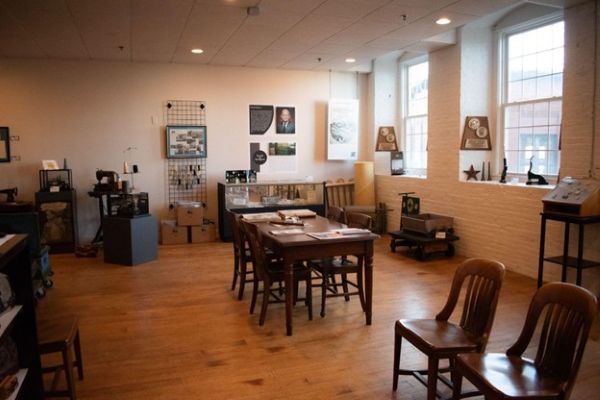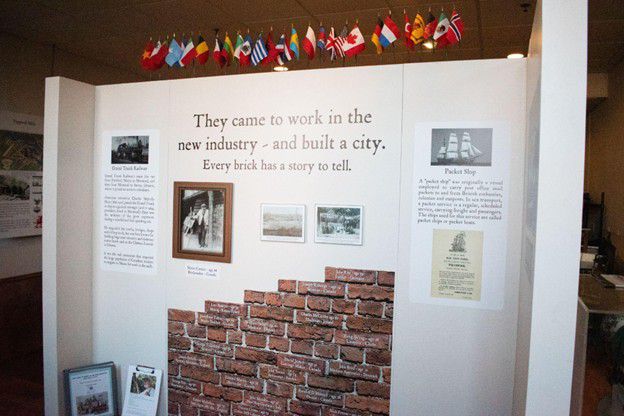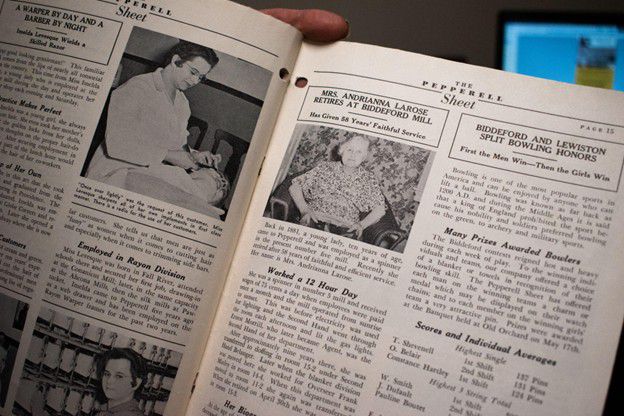Biddeford Mills Museum: Preserving the past for the future
 |
|
Since 2012, the Biddeford Mills Museum has been preserving and preparing exhibits for public access. PHOTO BY CALLY GUDROE
|
Originally established in 2012, the Biddeford Mills Museum was born out of an effort to preserve the rich history of the local textile industry.
When WestPoint Pepperell moved its operations south, a vast collection of equipment and records was left behind. Recognizing the historical significance of these artifacts, property owner Doug Sanford assembled a team of 20 former mill employees to curate a collection that would eventually become the foundation of the museum. After years of behind-the-scenes work, the museum officially opened to the public in 2019.
The museum relocated in July upstairs to its current address at 2 Main St., Building 18, Suite 230, in Biddeford, Maine. This move has significantly improved public accessibility, positioning the museum closer to the main entrance.
Visitors to the museum will find a treasure trove of exhibits and historical pieces dating back to the mill’s operational years. Many of these artifacts were salvaged from old or vacated buildings, while others have been donated by former employees and community members. Among the pieces is an old-time clock system displaying work hours from 1848, which adjusted to daylight savings. Workers of that era were given breaks for breakfast and lunch, often returning home or to boarding houses before resuming their shifts, according to museum curator Dorothy Mathes, who has been volunteering at the museum since 2017.
 |
Flags representing 28 countries honor the diverse workforce of the Biddeford textile mills, where immigrants from around the world came to build a new life and contribute to the industry. PHOTO BY CALLY GUDROE |
One of the most striking exhibits is a collection of miniature flags and maps that pay tribute to the diverse workforce of the early 1900s. These flags once adorned the mill lobby, greeting employees as they began their workday.
“Individuals would see the flags of their home countries, giving them a sense of pride as they started their day,” said David Bishop, a museum volunteer and former Pepperell worker.
Bishop, who specialized in repairing machinery that produced flocks for the renowned Vellux blankets, recalls how the creation of these blankets in the 1950s revitalized the textile industry in the North. Under the leadership of Francis Spencer, the production of Vellux blankets helped sustain thousands of jobs for more than four decades.
One of the museum's most ambitious ongoing projects, aligning with its recent relocations, is the digitization of its vast collection of mill ledgers and the Pepperell Sheets magazines, ensuring their preservation for future generations. These documents, which contain payroll records, dividend information, and company news, provide invaluable insight into local history and family lineages.
Bishop and another volunteer spent a year transporting ledgers to the Portland Public Library, where they meticulously scanned each page. The museum has also compiled and digitized the Pepperell Sheets, which date back to 1920. These newsletters contain a wealth of information, from department updates to local social happenings.
“You’d find little notes about who saw whom at the movies on Saturday night or who was visiting for dinner,” says Mathes, “it was like little gossip columns.”
 |
The Pepperell Sheets paid tribute to many workers who dedicated their lives to the textile mills, highlighting their achievements, daily lives, and contributions to the community. PHOTO BY ALLY GUDROE |
To make these records more accessible, Mathes, Bishop, and other volunteers indexed over 20,000 names from the Pepperell Sheets, creating a searchable database for visitors tracing their family history. However, gaps remain in the collection, particularly in the 1930s, and the museum is eager to acquire missing editions.
The heart of the Biddeford Mills Museum lies in its dedicated volunteers, primarily retirees who keep the institution running. While their passion and commitment drive the museum’s success, Mathes acknowledges the need for additional help, particularly in technical areas such as social media and advertising. “We manage, but we know there’s a better way of doing things,” she says. The museum operates entirely on volunteer efforts, though plans are in place to eventually hire professionals to support its growth.
In addition to its exhibits, the museum offers guided walking tours of the mill buildings, including an underground canal that once powered the textile operations.
“The tours continue to be a success,” Mathes notes, generating a third of the museum’s annual budget.
For those interested in exploring the rich history of the Biddeford Mills or researching their ancestry, the museum welcomes visitors to sign the guestbook, located on an old supervisor’s table, and share notes about their family history. Donations of historical artifacts are also greatly appreciated as the museum continues its mission to preserve and share the legacy of Biddeford’s textile industry.
Cally Gudroe is a freshman at University of New England

